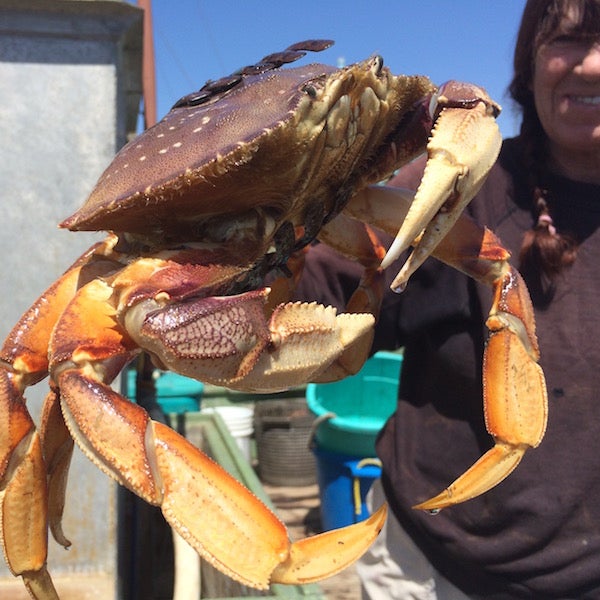This article was published in Scientific American’s former blog network and reflects the views of the author, not necessarily those of Scientific American
Dungeness crab, buttery and served steaming hot, is a Christmas tradition on many central California tables. But two years ago families had to forgo their holiday treat, and they were not the only ones to suffer. California fishermen were crippled by an unprecedented algal bloom that contaminated crabs with a neurotoxin called domoic acid, which is deadly to humans. That shut business down through the most lucrative part of the season, from Thanksgiving to Christmas.
For a fisherman like David Toriumi, the experience was crushing. Half of his yearly income comes from the crab season, and he would like to keep it that way. Since last year’s season went ahead as normal, he went ahead and prepared as usual for this year’s. Rubbers, hooks, bait jars, buoy tags and any number of other small parts have to be attended to, and crab pots repaired—not to mention hundreds or thousands of feet of polypropylene rope.
But all of this investment, both in money and in time spent splicing lines and readying bait buckets, has to be done well before authorities make the final call as to whether the season can proceed. That left Toriumi and other crab fishermen pacing up and down the docks in Moss Landing, California through October and November. “I’m optimistic,” he says. “I’m trying to stay positive. But the last three years I’m just trying to get out of debt.” Toriumi has a family and says that his newborn child makes him loath to seek better fishing grounds further north. Otherwise, he would have abandoned the central coast by now.
On supporting science journalism
If you're enjoying this article, consider supporting our award-winning journalism by subscribing. By purchasing a subscription you are helping to ensure the future of impactful stories about the discoveries and ideas shaping our world today.

Vicki Crow holds out a big dungeness crab for sale. Credit: Vicky Stein
Another crabber, Vicki Crow, who fishes from a creaky wooden boat—it is both her fishing vessel and her home—also hung on after the algal bloom. She considers herself lucky to have kept the boat, named the Beticia. And despite last year’s relative success, she is still recovering.
On a recent afternoon, her rescued cat, Fishsticks, lay curled up inside one of Vicki’s empty crab pots. The pots will stay that way until she can pay for expensive repairs to her engine, hire a deckhand or two and get back out on the water. She has a loyal following of local landlubbers who line up on weekends to buy fresh lingcod and whatever else is in season, so she will rely on them this winter.
The good news for central California is that this past summer brought low levels of Pseudo-nitschia, the algae that produces domoic acid. Preseason crabs, trapped and tested by the California Department of Fish and Wildlife (CDFW), came back clean. The season began on time, and so far catches have been decent.
But climate change has been spurring dire warnings about the increasing frequency of harmful algal blooms. Warmer average temperatures combined with more acidic water, changes in precipitation and upwelling currents can throw coastlines out of their historic patterns, but due to their complexity scientists cannot predict precisely what the effects will be. Christy Juhasz, a researcher from the CDFW, says, “At this time, climate change is an uncertainty but we don’t have any information to indicate that the future will be worse.” Juhasz and the CDFW decided to allow a regular crabbing season on the central coast this year, and Crow and Toriumi hope their investments will soon pay off.
Despite this year’s success, Toriumi is diversifying his income. He has started working with local schools in a “fishermen in the classroom” project, videoconferencing with elementary-schoolers and showing them glimpses of life out on the water. But he isn’t out of the crab game, and still plans to purchase his own permit as soon as he can.
“I just want to stay afloat,” he says.